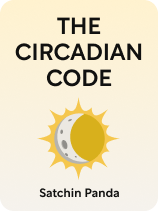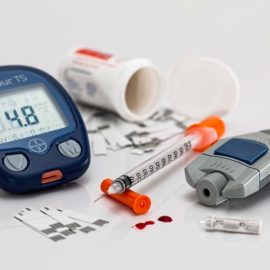

This article is an excerpt from the Shortform book guide to "The Circadian Code" by Satchin Panda. Shortform has the world's best summaries and analyses of books you should be reading.
Like this article? Sign up for a free trial here.
When is the best time to exercise? How does your workout routine affect your sleep and overall well-being?
Circadian rhythm and exercise are closely linked, affecting your health in many ways. Dr. Satchin Panda says regular physical activity can boost your mood, improve brain function, and promote better sleep. Knowing how to align your workouts with your body’s natural rhythms can maximize these benefits.
Read on to discover the optimal times for different types of exercise and how to make the most of your fitness routine.
Circadian Rhythm and Exercise
Panda highlights the connection between circadian rhythm and exercise, explaining that regular physical activity boosts your circadian health and overall well-being. Research shows that people who exercise during the day produce more of a hormone that promotes better sleep. Exercise also improves your mood and brain functioning, making it easier for you to relax, be productive, and feel happy.
(Shortform note: In Spark, John Ratey explains that exercise is especially beneficial for brain health because when our human ancestors hunted and gathered, their brains and bodies had to work in concert to survive. Because of this, our brains evolved to function best when paired with physical activity, and this connection remains even though our modern lives don’t require the same physical demands. Ratey says that exercise enhances your brain structure and function in several ways: It stimulates your brain to produce proteins that strengthen neural connections and grow new brain cells, acts as a mild stressor that trains your body to handle stress better, and helps balance key neurotransmitters that influence mood, attention, and motivation.)
Panda recommends you exercise for at least 30 minutes a day for five days a week. You don’t have to exercise strenuously, either—any movement that burns calories works. If your schedule is tight, you can break up your physical activity into two or three smaller periods throughout the day and get the same benefits.
(Shortform note: You can divide your daily exercise into even smaller segments throughout the day. Some research suggests that short “exercise snacks” can give you similar benefits to longer workout sessions. Exercise snacks are brief, high-intensity movements lasting about two minutes that you can do throughout your day, such as taking the stairs instead of the elevator or doing a quick set of jumping jacks during a work break. These quick spurts of movement can improve your heart function, increase endurance, and enhance muscle strength.)
Because of your body’s natural rhythms, different types of exercises are better suited to different times of the day. Let’s look at some options you can consider.
Option #1: Morning aerobic exercise. Panda asserts that doing outdoor aerobic activities in the morning, such as walking, running, or swimming, can significantly boost your mood and energy levels. Getting outdoor morning exercise is also an easy way to get enough light exposure to help regulate your circadian rhythm.
(Shortform note: While walking, running, and swimming are good cardio options, Michael Easter recommends rucking as an outdoor exercise that aligns perfectly with our natural strengths. In The Comfort Crisis, Easter explains that rucking involves carrying a heavy backpack while walking long distances, which mimics the activities our ancestors performed regularly. It burns more calories than walking and provides health benefits similar to running but with less impact on your joints. Rucking also strengthens your core and glute muscles, which can help prevent back pain and improve posture. To incorporate rucking into your morning routine, simply add weight to your backpack during your regular walks.)
Option #2: Afternoon strength training. According to Panda, your muscle tone naturally increases in the afternoon, which makes it the best time for strength training. Scheduling more intense workouts like weight lifting during this time can lead to maximum gains with minimal risk of injury. Also, exercising in the late afternoon can reduce your appetite by evening, which can help you consume less at dinner.
(Shortform note: To maximize the benefits of your afternoon strength training, consider the timing of your protein intake. In Bigger Leaner Stronger, Michael Matthews says that consuming 30 to 40 grams of protein within a few hours before or after your workout can significantly boost muscle growth and recovery. Eating protein before exercising gives your body the nutrients it needs to start the muscle-building process. Having protein after training replenishes nutrients that were depleted and helps your body build more muscle than it broke down during the workout. Some dietitians add that eating protein makes you feel fuller than other nutrients like carbs and fats, so doing so can also help you eat less at dinner.)
Option #3: Exercise after dinner if it’s your only option. Panda writes that it’s better to exercise after dinner than to not exercise at all that day. However, avoid intense workouts and stay away from bright lights to avoid interfering with your sleep. For example, you might opt for a gentle yoga routine or a leisurely walk after dinner instead of a high-intensity workout.
(Shortform note: Some research suggests that evening exercise can actually help you fall asleep, as long as you keep the workout light to moderate in intensity (as Panda suggests) and finish at least an hour before bedtime. In addition to yoga and walking, other good evening exercise options include stretching, leisurely swimming or biking, and light to moderate weightlifting. Avoid vigorous activities like high-intensity interval training (HIIT), running, or heavy weightlifting close to bedtime, as these can stimulate your nervous system and raise your heart rate too much, making it harder to fall asleep.)
Exercise
Consider your exercise routine. When do you usually work out, and what types of activities do you do? How might you adjust your exercise schedule to better align with the ideal times Panda suggests, such as morning aerobic exercise or afternoon strength training?

———End of Preview———
Like what you just read? Read the rest of the world's best book summary and analysis of Satchin Panda's "The Circadian Code" at Shortform.
Here's what you'll find in our full The Circadian Code summary:
- The modern habits that disrupt your circadian rhythm
- How your internal 24-hour schedule works
- The little habits that will recharge your battery






